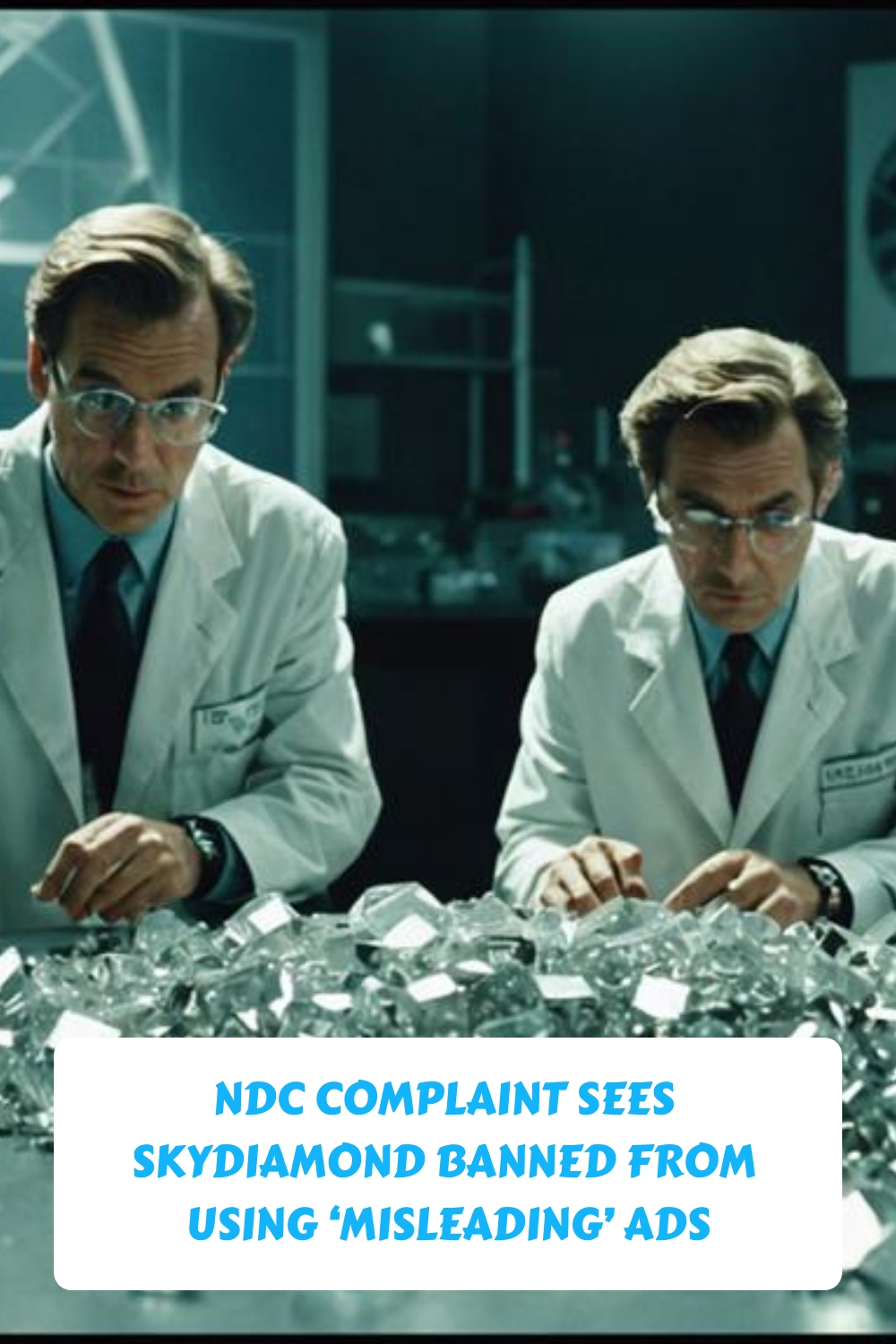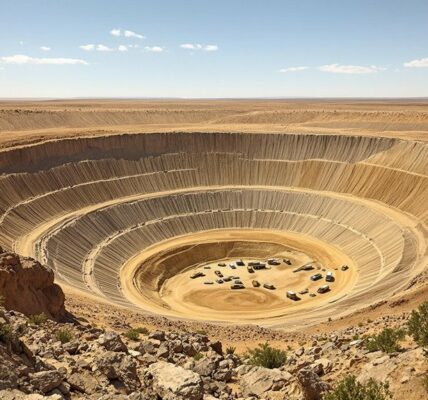NDC Complaint Sees Skydiamond Banned From Using ‘Misleading’ Ads
The Advertising Standards Authority (ASA) has imposed a ban on Skydiamond’s advertising, subsequent to a complaint by the Natural Diamond Council (NDC). The complaint highlighted misleading promotions suggesting that Skydiamond’s lab-grown diamonds are eco-friendlier than they may actually be. This action underscores the importance of transparency in marketing, particularly regarding the environmental claims of lab-created diamonds. By promoting a clearer understanding among consumers about the nature of these diamonds, the ASA aims to bolster consumer trust and ensure that marketing aligns more faithfully with the facts. Further exploration might reveal the broader implications of this ruling on industry practices.
Article Contents
- 1 NDC Files ASA Complaint
- 2 Skydiamond’s Advertising Claims
- 3 ASA’s Evaluative Process
- 4 Implications of ASA Ruling
- 5 Future of Diamond Advertising
- 6 Frequently Asked Questions
- 6.1 How Do Lab-Grown Diamonds Differ From Natural Diamonds in Composition?
- 6.2 What Impact Do Lab-Grown Diamonds Have on the Environment Compared to Mined Diamonds?
- 6.3 Can Lab-Grown Diamonds Be Considered Investments Like Natural Diamonds?
- 6.4 What Are the Price Differences Between Lab-Grown and Natural Diamonds?
- 7 Conclusion
- 8 More Reading
NDC Files ASA Complaint
In response to potentially deceptive advertising, the Natural Diamond Council (NDC) lodged a formal complaint with the UK’s Advertising Standards Authority (ASA) against Skydiamond’s marketing practices. This action highlights a significant concern over the lab-grown diamond perception and underscores the importance of marketing transparency to safeguard consumer awareness.
“Our top priority is to be a resource for the consumer to educate, inspire and instil confidence to assure them that they can trust the product they are investing in, whether it’s a natural diamond or a laboratory-grown diamond.”
DAVID KELLIE, NATURAL DIAMOND COUNCIL
The NDC’s move reflects a communal effort to guarantee that the narrative surrounding diamonds remains clear and truthful, thereby fostering a sense of trust and belonging among consumers who value authenticity in their purchases. By addressing these misleading advertisements, the NDC advocates for an informed consumer base to make educated decisions in a market where the distinction between natural and lab-created diamonds is essential.
Skydiamond’s Advertising Claims
Building on the concerns raised by the NDC, Skydiamond’s advertising claims have come under scrutiny for potentially misleading consumers about the nature of their diamonds. The advertisements suggested a uniqueness tied to their origin from atmospheric elements, potentially confusing buyers about their lab-created status.
- Marketing strategies: Emphasised eco-friendly creation, potentially overshadowing the lab-grown nature.
- Consumer awareness: Claims might lead to misconceptions about their diamonds being natural rather than synthetic.
- Brand reputation: The integrity of Skydiamond’s marketing could impact trust and loyalty among consumers.
- Community and belonging: Effective communication fosters a sense of informed choice and trust within the consumer community, aligning their values with brand practices.
ASA’s Evaluative Process
To assess the veracity of Skydiamond’s advertising claims, the Advertising Standards Authority (ASA) initiated a thorough evaluative process. This process meticulously examined how Skydiamond’s promotions aligned with ASA guidelines, which are designed to safeguard consumer perception and guarantee clarity in marketing strategies.
The ASA ruled that Skydiamond’s marketing was misleading.
The ruling states, “The ASA considered that consumers would understand the word ‘diamond’ in isolation to mean a mineral consisting of crystallised carbon that was naturally occurring.”
The focus was on determining whether the advertisements might lead the average consumer to misconceive the nature of the products being sold, namely synthetic versus natural diamonds. The ASA’s approach involved scrutinizing the language and imagery used in Skydiamond’s campaigns and evaluating their potential impact on consumer understanding.
This method underscores the ASA’s commitment to preventing misleading advertising, fostering an environment where consumers feel informed and included in the marketplace narrative.
Implications of ASA Ruling
The ASA ruling sets a precedent that could influence future marketing strategies for all companies producing synthetic diamonds. This decision not only enforces stricter advertising guidelines but also fosters a more informed consumer base, ensuring that the public is accurately educated about the products they purchase. The verdict emphasizes the importance of transparency in marketing, aligning with broader consumer rights and expectations.
- Enhanced Consumer Awareness: Educating the public about the nature of synthetic versus natural diamonds.
- Stricter Marketing Ethics: Promoting honesty in advertising claims.
- Tighter Industry Regulations: Potentially leading to more rigorous standards across the diamond industry.
- Community Trust: Building consumers’ sense of belonging and trust through transparent marketing practices.
Future of Diamond Advertising
Given the ASA’s recent ruling, future diamond advertising will likely emphasize clearer distinctions between synthetic and natural diamonds. In response to growing sustainability concerns, ads might also focus on the ethical sourcing of diamonds, appealing to a community that values moral choices. This trend could also lead to a shift in the narrative around synthetic diamonds, with a greater emphasis on their eco-friendly production and ethical sourcing. In particular, consumers may begin to see more advertising that highlights the ethical sourcing for synthetic diamonds, appealing to those who prioritize sustainability and ethical practices in their purchasing decisions. Overall, this shift in advertising could reflect a broader cultural movement towards more conscientious consumerism, where ethical and sustainable practices are increasingly valued.
As consumer awareness increases, companies are expected to transparently share the origins of their products, whether they are mined from the earth or created in laboratories. This shift will likely foster a sense of belonging among consumers who prioritize environmental and ethical considerations in their purchasing decisions.
The evolution in advertising strategies will not only align with regulatory standards but also resonate with a conscientious audience, heralding a new era of informed and responsible consumption in the gemstone market.
Frequently Asked Questions
How Do Lab-Grown Diamonds Differ From Natural Diamonds in Composition?
Lab-grown diamonds and natural diamonds share identical chemical properties but differ in their formation process. Identification methods are essential to distinguish between them, as lab-grown variants are created artificially in controlled environments.
What Impact Do Lab-Grown Diamonds Have on the Environment Compared to Mined Diamonds?
Lab-grown diamonds generally have a lower carbon footprint, reduced water usage, and lesser biodiversity impact compared to mined diamonds, making them a more environmentally sustainable choice for consumers seeking ethical alternatives.
Can Lab-Grown Diamonds Be Considered Investments Like Natural Diamonds?
Lab-grown diamonds, while sparkling in market stability and investment trends, generally offer lower resale value compared to their natural counterparts, potentially affecting their desirability as long-term investments within the community of collectors.
What Are the Price Differences Between Lab-Grown and Natural Diamonds?
Lab-grown diamonds generally cost less than natural ones due to market trends, increased retail availability, and evolving consumer perception. This price difference makes them an accessible choice for many seeking connection through jewelry. Additionally, lab-grown diamonds appeal to environmentally conscious buyers, as their production often has a smaller ecological footprint compared to mining. This shift in consumer preference has driven innovation in the jewelry industry, blending modern advancements with timeless elegance. With antique jewelry mysteries uncovered through expert craftsmanship and contemporary approaches, the market now offers a unique fusion of history and sustainability.
Conclusion
The ASA ruling against Skydiamond sets a precedent in the advertising of lab-grown versus natural diamonds, highlighting the significance of clarity and truthfulness in marketing communications.
As the industry evolves, adherence to these standards is crucial to maintain consumer trust.
Importantly, over 70% of millennials consider the ethical sourcing of diamonds important, a statistic that underscores the potential market impact of transparent advertising.
This decision marks a pivotal moment in shaping the future landscape of diamond advertising.
More Reading
- Complaint Against UK Retailer Using Misleading Terminology Upheld
- Misleading advertising: The Diamond Industry’s war of words.
- Complaint Against Skydiamond for Misleading Marketing of Laboratory-Grown Diamonds Upheld by Advertising Standards Authority (ASA)






